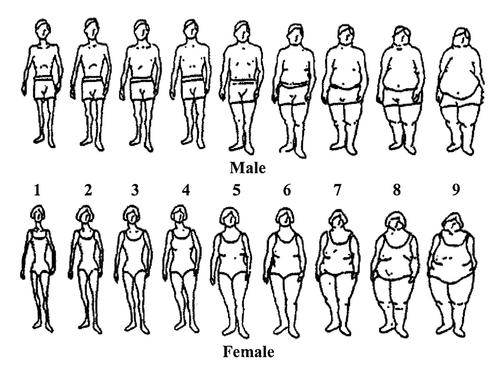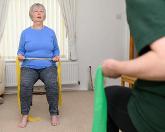see all jobs
What does an unhealthy BMI look like?
Health messages and pictures of what a healthy and unhealthy BMI look like should be combined, according to researchers who believe that as the rest of the global population’s obesity levels rise, we may all lose sight of what a healthy body actually looks like.
African American women are not concerned about being overweight and they believe only serious obesity can be bad for your health, according to a study published by the Journal of Nutrition, Education and Behaviour.
Researchers from the Rush University Medical Center in Chicago asked 69 African American women to look at a “body image scale” of drawings of women of different sizes. They were asked to identify which women on the scale were overweight, obese and ‘too fat’.
These women were recruited from a low income neighbourhood of Chicago with a mean age of 38, all of whom had at least one child and a mean BMI of 32 – which is obese. Normal BMI is between 18.5-24.9 and overweight is between 25-29.9. Obese is 30-34.9 while above 35 is considered severe or morbid obesity.
Participants in the study only found the last two drawings of women on the “body image scale” were “too fat” when actually, according to the study, the last four drawings show obese women – the last two of which are severely obese.
When asked to identify their own body weight from the drawings, many of them got it wrong. The 64 per cent of overweight women and 40 per cent of obese women did not classify their body size as either overweight, obese or too fat. In direct contrast with medical recommendations, these women believe that the ‘overweight’ category begins at 35, and not at 25.
The study’s leader, Elizabeth Lynch, says the reason for this disparity between what these women think is ‘too fat’ and what the medical profession thinks is unhealthy is cultural. There is a long history of African American women enjoying a larger body size than non-Hispanic whites, according to the study.
The problem that this highlights, however, is that as the global population continues to get fatter, heavier body shapes will be seen as the norm – the same way that the women in this study don’t find obese people ‘too fat’. In turn, physicians telling patients they are overweight, could be ignored, causing the obesity epidemic to spiral out of control.
The need for alternative disseminations of health warnings is becoming more apparent. In the UK, for example, the average Briton is failing to follow seven out of eight basic health guidelines.
The National Health Report 2014 finds that the average UK male eats 3.3 portions of his ‘5 a day’; has an ‘overweight class’ BMI of 26.2; only drinks 953ml of water a day; sleeps for 6.4 hours a night; does 73 minutes of cardio a week and 1.4 muscle strengthening workouts; smokes 3.8 cigarettes a day; and drinks 13.6 units of alcohol a week. Of these eight measures, only the level of alcohol consumption falls within recommended guidelines.
The reports authors said that ignoring guidelines and relying on the nation’s health system to pick up the pieces is not the way forward, so perhaps it’s time for a change in approach, with pictures used to reinforce existing health messages.
- News by sector (all)
- All news
- Fitness
- Personal trainer
- Sport
- Spa
- Swimming
- Hospitality
- Entertainment & Gaming
- Commercial Leisure
- Property
- Architecture
- Design
- Tourism
- Travel
- Attractions
- Theme & Water Parks
- Arts & Culture
- Heritage & Museums
- Parks & Countryside
- Sales & Marketing
- Public Sector
- Training
- People
- Executive
- Apprenticeships
- Suppliers





























